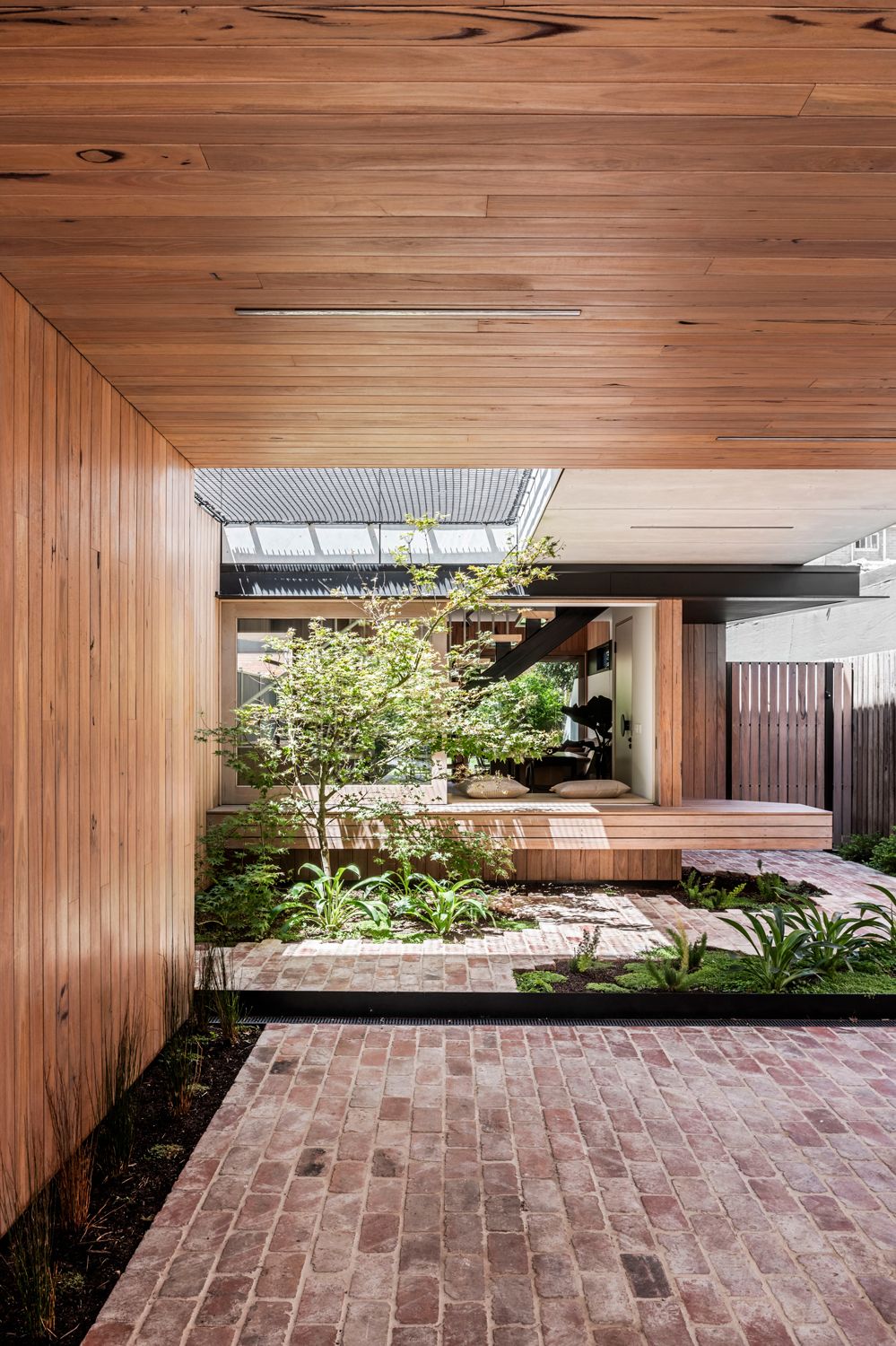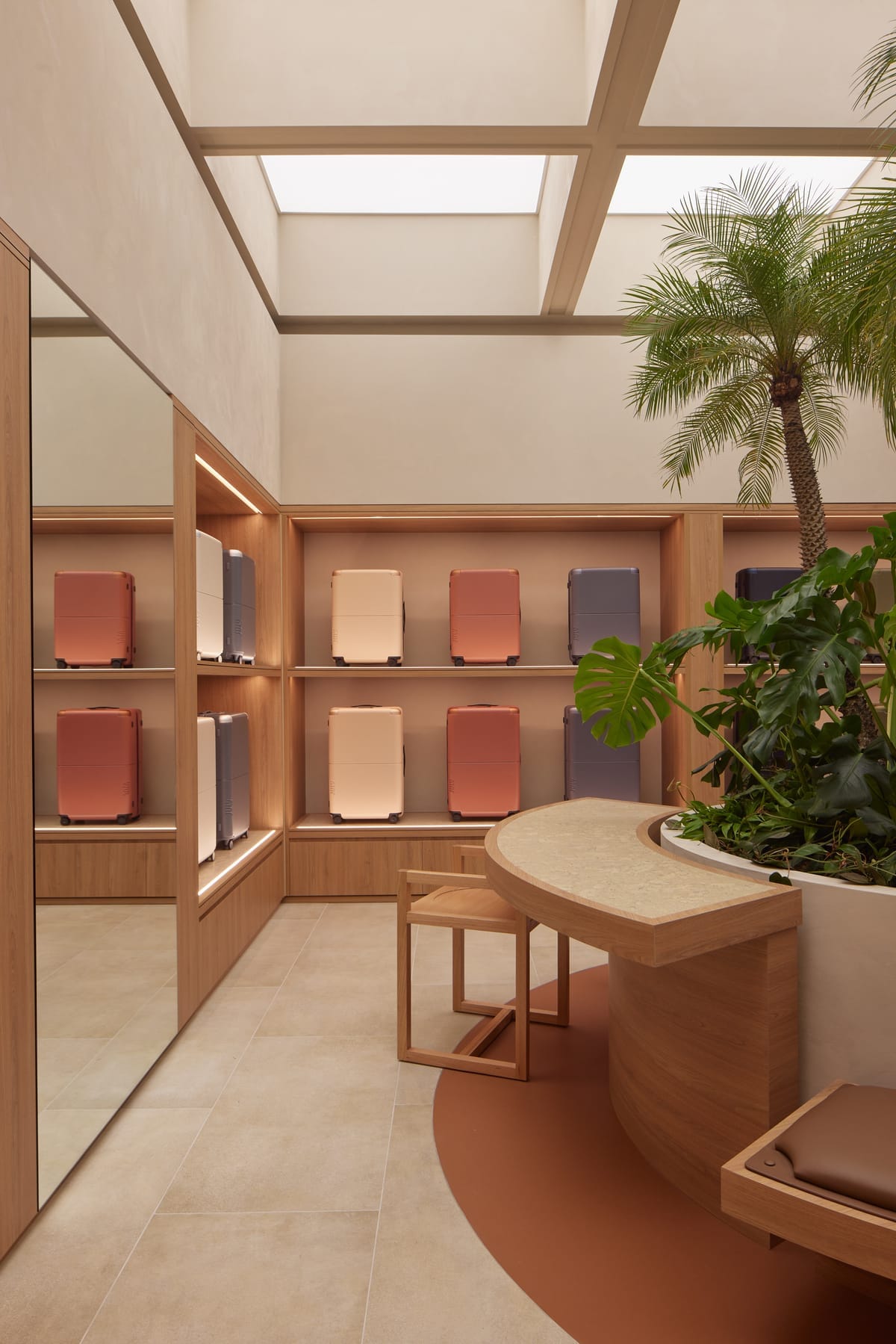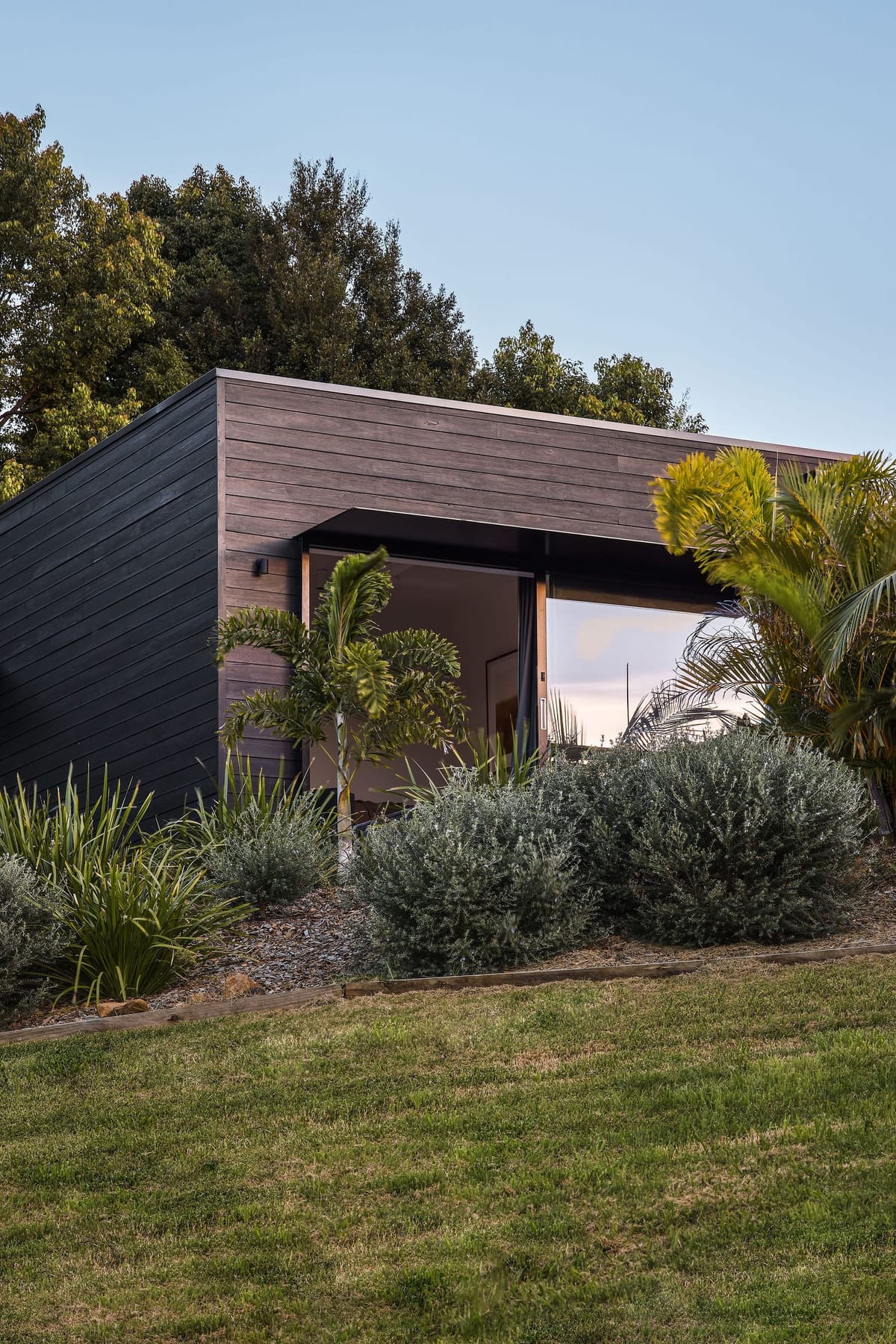
A courtyard is not just an outdoor space; it's a sanctuary, a place where one can enjoy the beauty of nature within the confines of home. The trees that you plant here are not just green additions; they are the soul of your courtyard, offering shade, beauty, and a touch of wilderness. However, the challenge lies in picking the right tree that aligns with the courtyard's size, aesthetics, and the local climate. So, if you're contemplating sprucing up your courtyard with some tree-planting, here are ten terrific options to consider.
Japanese Maple (Acer palmatum)
The epitome of grace and elegance, the Japanese Maple is renowned for its beautifully shaped leaves that change colour with the season. It's a visual treat throughout the year and particularly fitting for courtyards with limited space.
- Adaptable Size: Particularly suitable for smaller spaces, Japanese Maple can be pruned and maintained to fit the confines of a courtyard without overwhelming it.
- Seasonal Spectacle: The ever-changing colours of its leaves with every season provide a year-round visual delight.
- Elegance and Beauty: The graceful and unique shape of its leaves enhances the overall aesthetics of the courtyard, making it a focal point of admiration.
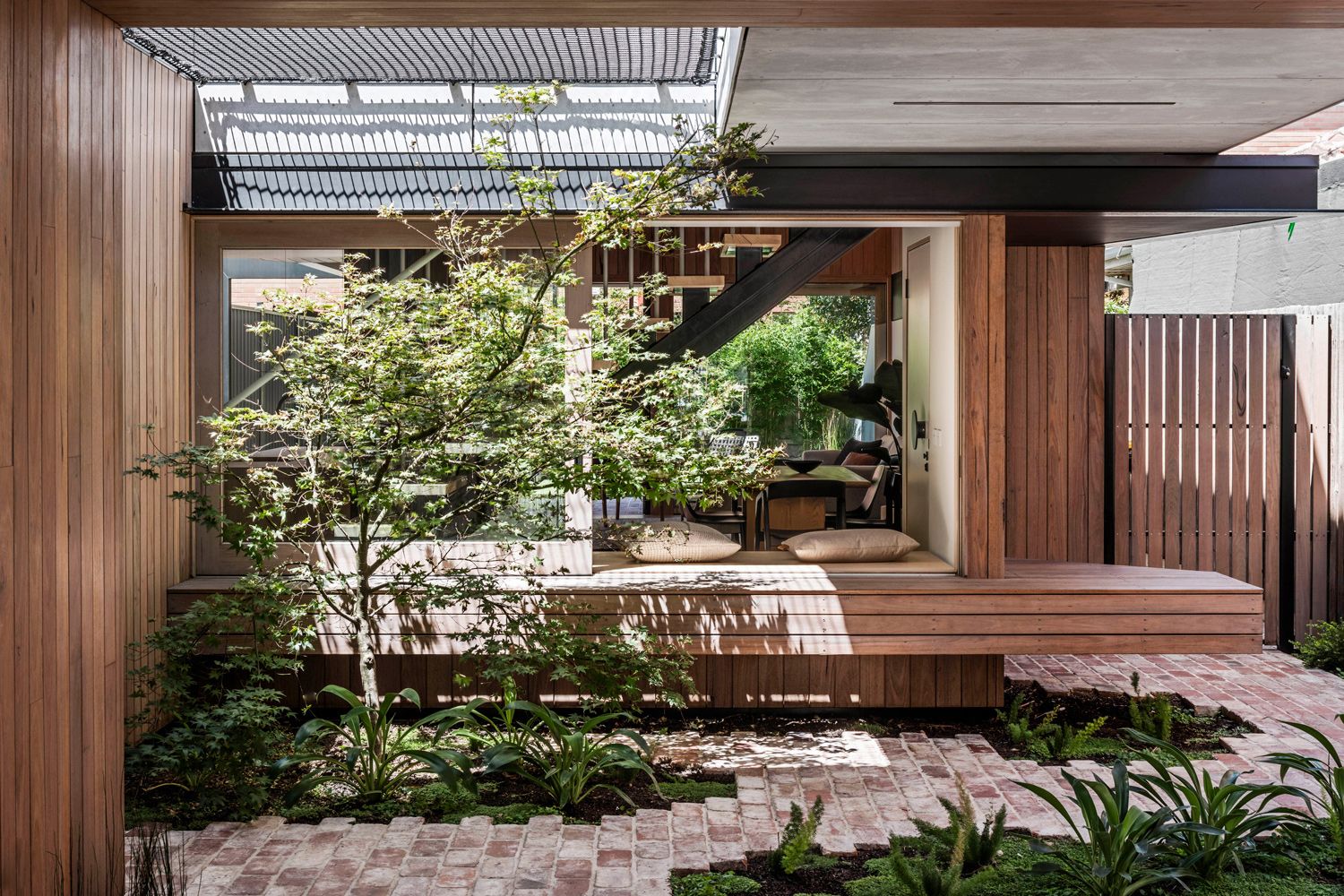
Crepe Myrtle
The flamboyant display of flowers and its unique exfoliating bark make the Crepe Myrtle a must-have for any courtyard. Besides its beauty, it's a sturdy tree that requires minimal maintenance.
- Floral Display: Known for its vibrant flower clusters, the Crepe Myrtle brightens up courtyards throughout its blooming season.
- Unique Bark: Its peeling and exfoliating bark adds textural interest, especially in winter when the tree is devoid of leaves.
- Low Maintenance: Requires minimal care, allowing homeowners to enjoy its beauty without excessive upkeep.
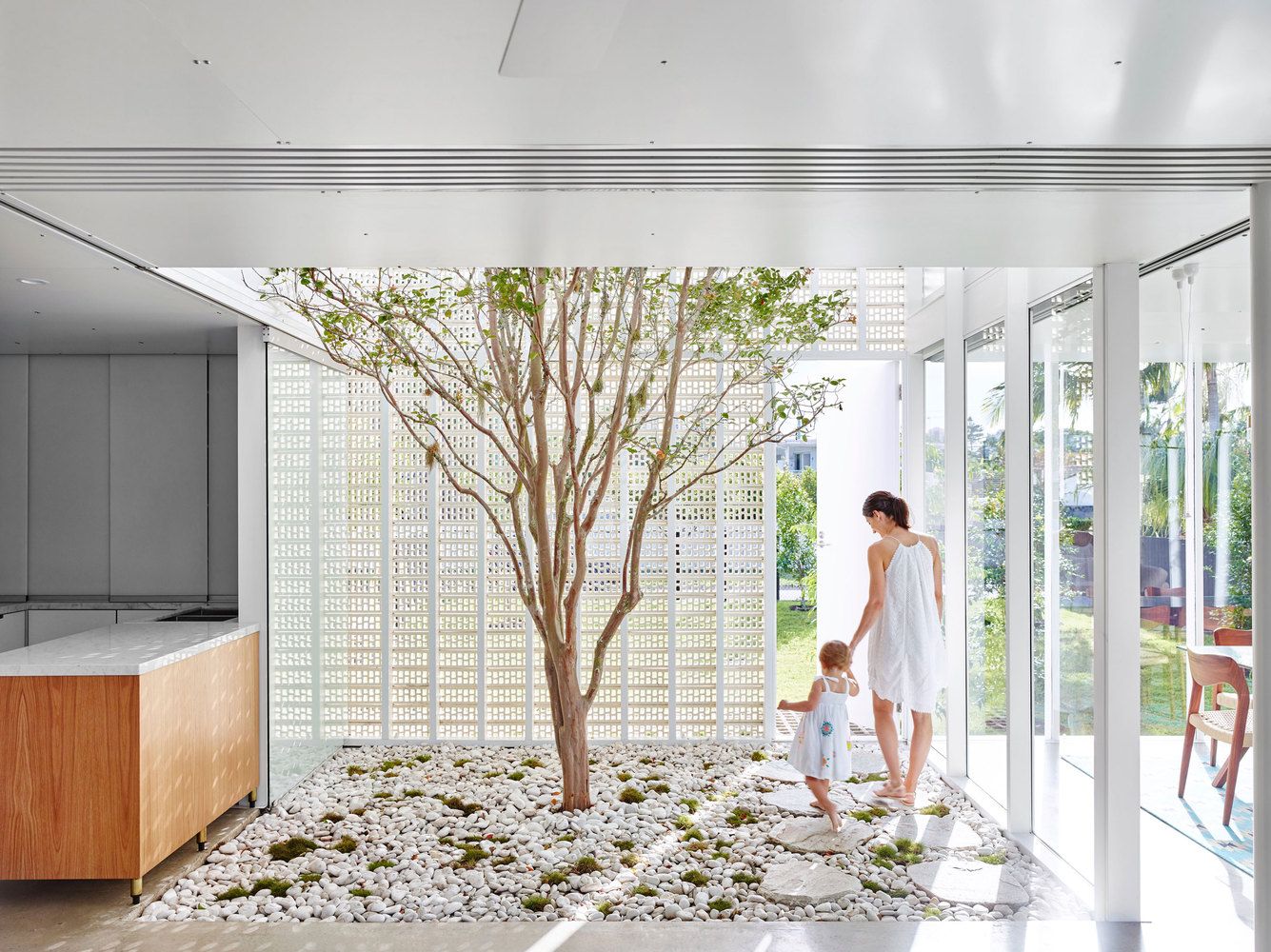
Olive Tree (Olea europaea)
The Olive Tree's silver-green leaves and robust trunk transport you straight to the Mediterranean coasts. It’s more than just a tree; it’s a symbol of peace and prosperity, apt for a peaceful retreat.
- Mediterranean Charm: Its distinct silver-green leaves evoke the feel of the Mediterranean, providing an exotic touch.
- Symbolic Tree: Represents peace and prosperity, adding a deeper meaning to the courtyard space.
- Sturdy Growth: The robust trunk and resilience of the Olive Tree make it a lasting addition to any space.
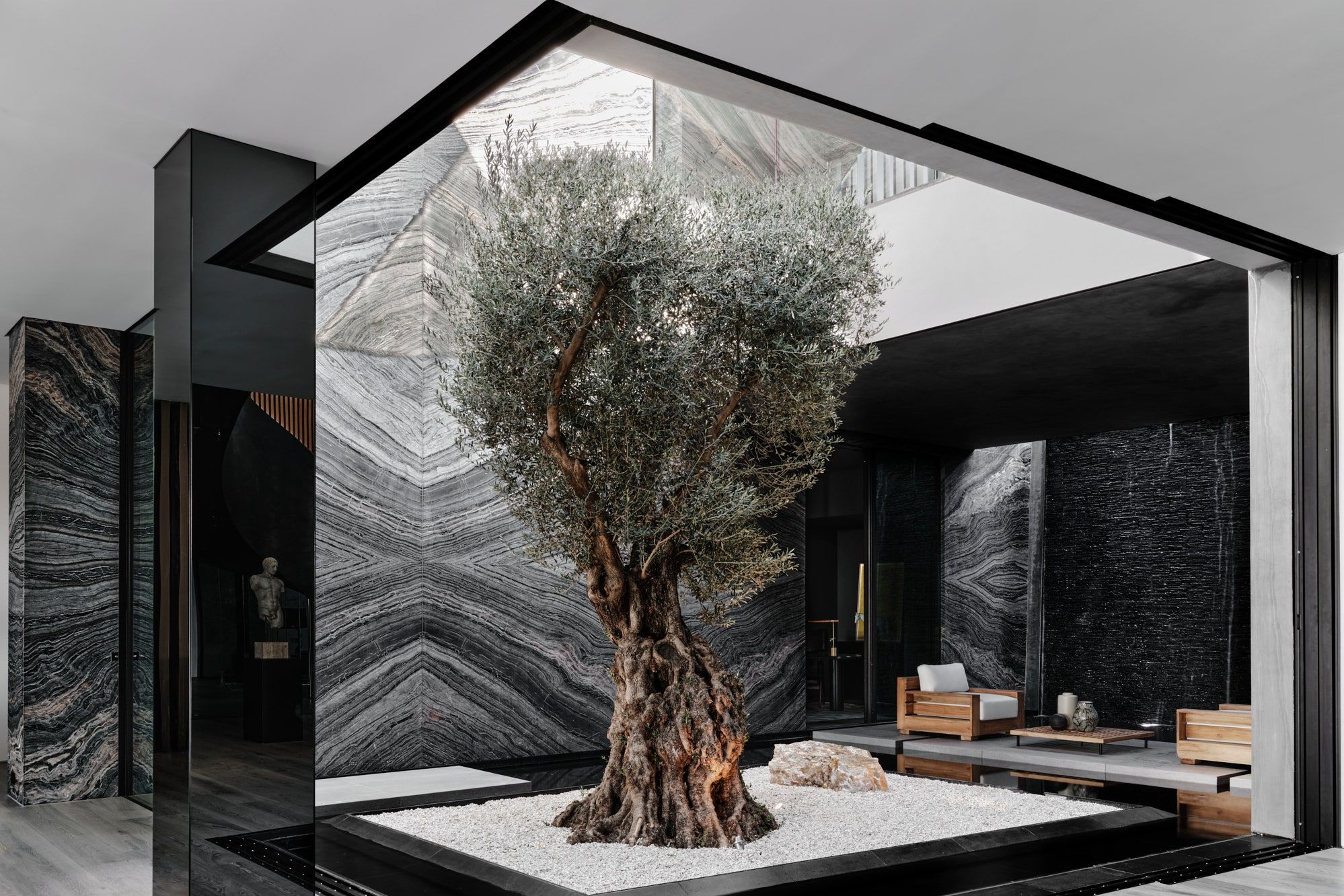
Fig Tree (Ficus carica)
Offering shade and succulent fruits, the Fig Tree is a blend of utility and aesthetics. Its twisting branches also provide an architectural element to the courtyard.
- Dual Utility: Provides both shade and edible fruits, making it both functional and aesthetically pleasing.
- Architectural Appeal: The twisting and sprawling branches add an architectural element, making the tree a statement piece.
- Generous Canopy: Its large leaves offer ample shade during sunny days.
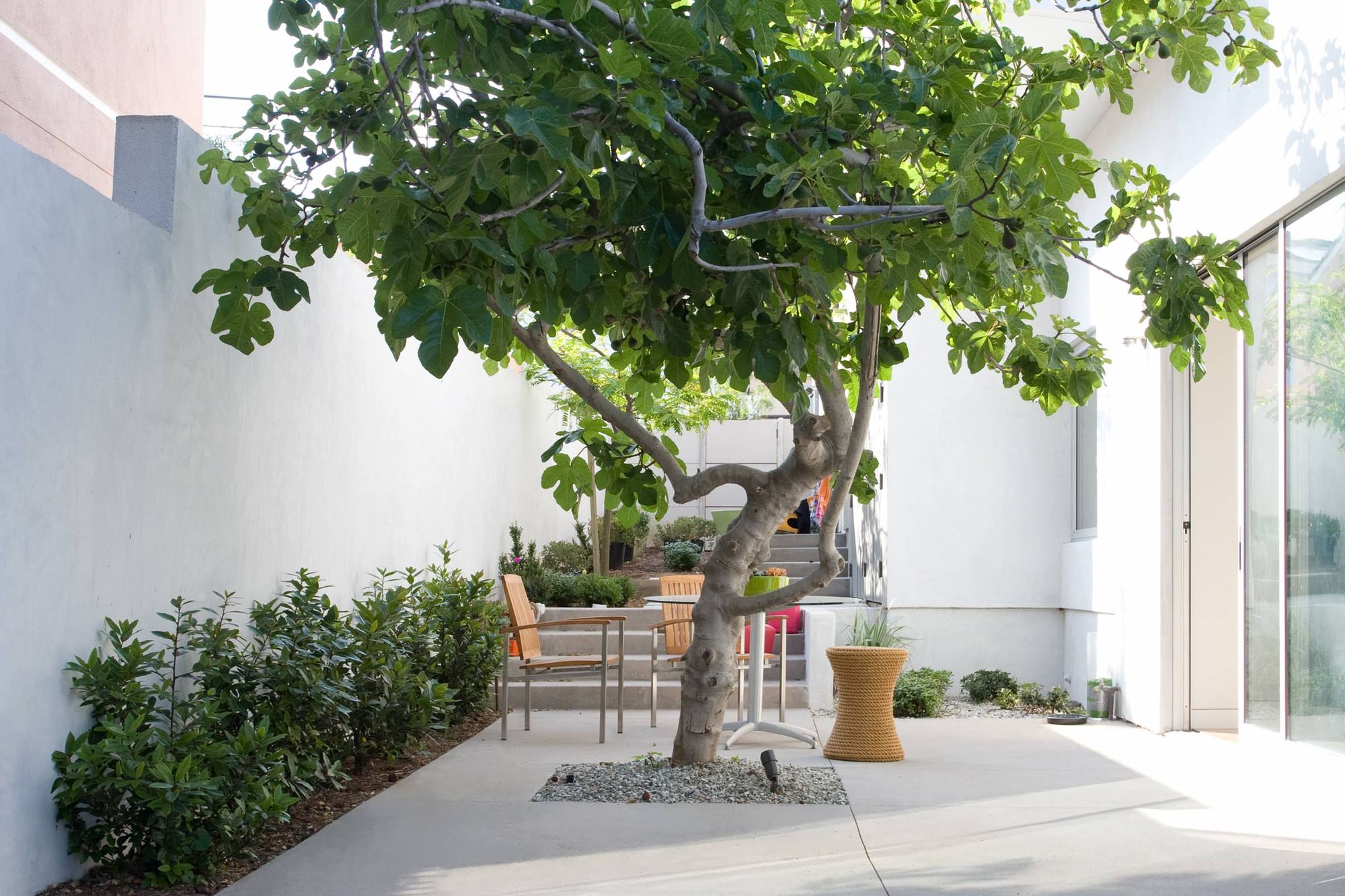
Ornamental Prunus
Spring brings a mesmerising bloom of delicate flowers to the Ornamental Prunus. Its beauty and size make it an apt choice for courtyards.
- Springtime Beauty: The bloom of delicate flowers during spring provides a fresh and mesmerising visual treat.
- Size and Form: Typically of a size suitable for courtyards, it doesn't dominate the space.
- Versatility: Complements a variety of courtyard designs, from modern to traditional.

Blueberry Ash (Elaeocarpus reticulatus)
The Blueberry Ash is a treat for birdwatchers and tree lovers alike. Its fringed flowers and blue berries attract various bird species, making your courtyard a lively space.
- Wildlife Attractor: The tree's flowers and berries attract a variety of birds, enhancing biodiversity.
- Visually Pleasing: Fringed flowers and blue berries offer a distinct visual appeal.
- Compact Growth: Its growth pattern suits confined spaces like courtyards.
Lilly Pilly
The vibrant foliage of the Lilly Pilly, coupled with its resilience, makes it a favourite for many Australian courtyards. It's an evergreen delight that requires minimal attention.
- Vibrant Foliage: Offers a year-round display of lush, green leaves.
- Resilient Growth: Known for its adaptability and resilience to various conditions.
- Low Maintenance: An evergreen tree that requires little attention once established.
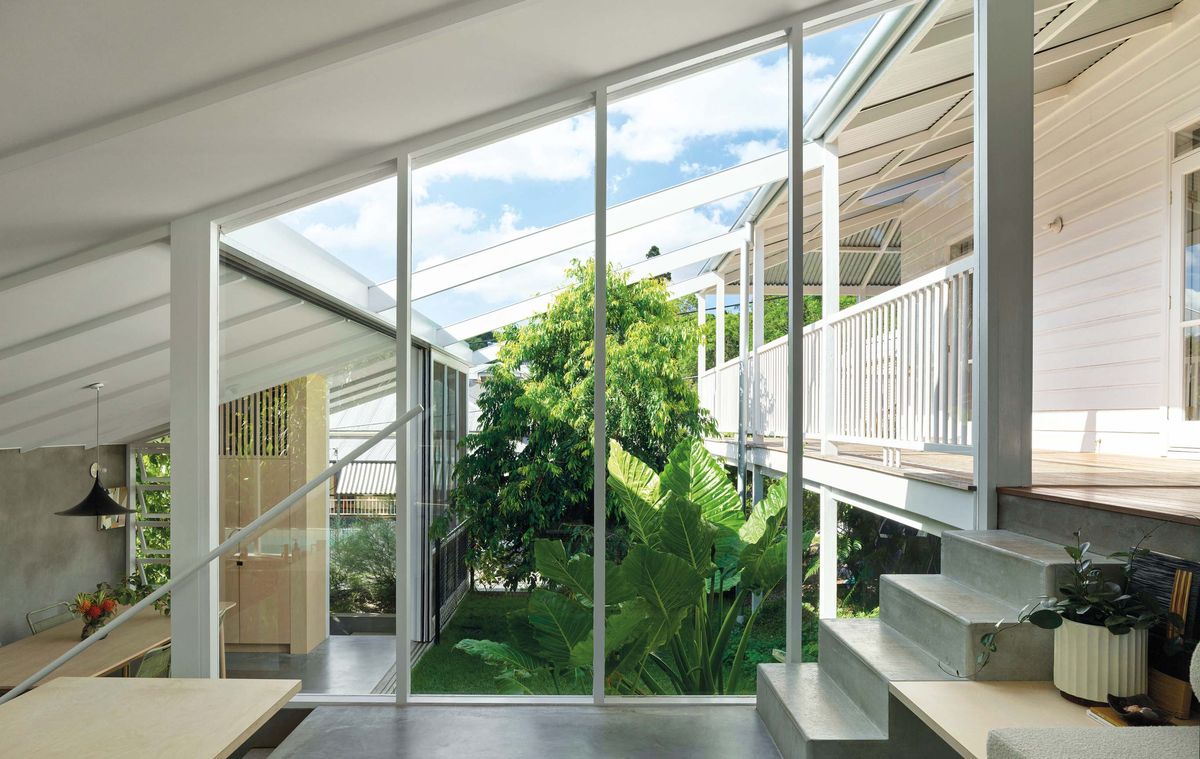
Tibouchina
If you're looking to add a tropical touch to your courtyard, the Tibouchina with its purple blooms is the perfect choice. It’s a vibrant addition that's easy to maintain.
- Tropical Touch: Purple blooms offer a touch of the tropics to any courtyard.
- Lush Greenery: Even when not in bloom, the foliage remains green and vibrant.
- Ease of Care: Requires basic maintenance, making it ideal for those seeking beauty with less effort.
Frangipani
The Frangipani is not just a tree; it's an experience. Its iconic flowers and tantalising aroma transport you to a tropical paradise, making your courtyard a relaxing getaway.
- Sensory Experience: The fragrant flowers provide both visual beauty and a tantalising aroma.
- Tropical Ambience: Instantly transports the courtyard to a tropical paradise setting.
- Minimalist Structure: With its spaced branches and leaves, it offers shade without overcrowding.
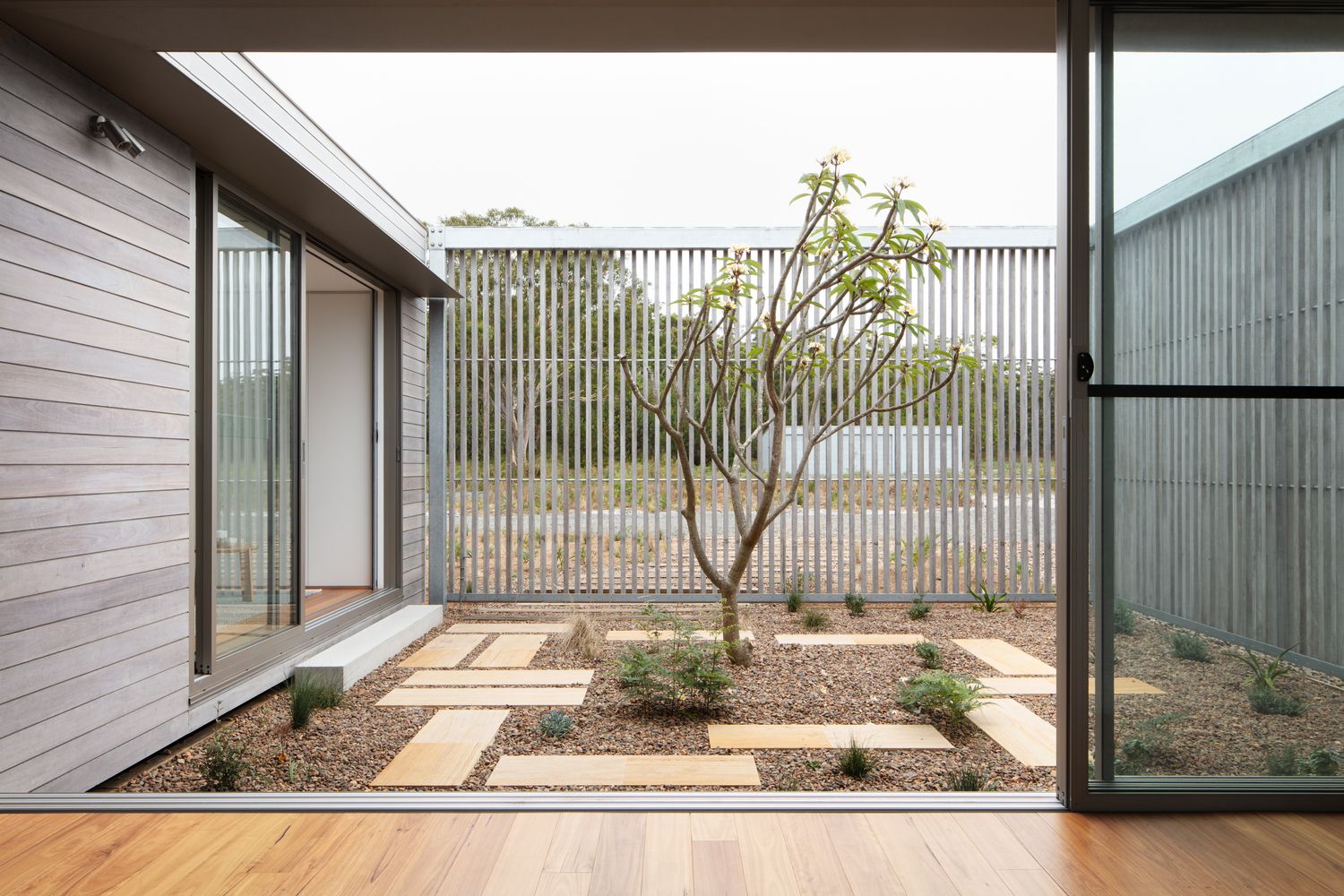
Chinese Redbud (Cercis chinensis)
The Chinese Redbud is a spectacle in spring with its magenta blossoms. It's a tree that promises beauty throughout the year and fits perfectly in any courtyard.
- Springtime Display: The tree bursts into a spectacle of magenta blossoms in spring.
- Year-Round Beauty: Even outside of its blooming season, its shape and form add to the courtyard's appeal.
- Flexible Placement: Suits a variety of courtyard sizes and designs.
While each tree has its own unique charm and requirements, the right choice can elevate the aesthetics of your courtyard, making it a place of solace and joy. Before making your pick, ensure you assess the specific needs of your space, such as soil quality, sunlight, and maintenance levels, to find the perfect match. Happy planting!
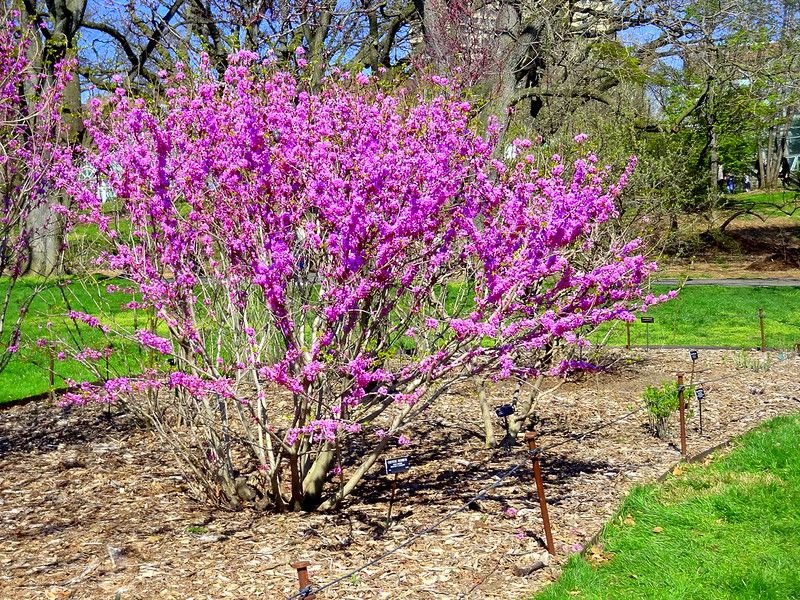
Frequently Asked Questions
What are the best native Australian trees for courtyards?
Choosing native trees can be beneficial as they are well-adapted to the local soil and climate. Some popular native trees for Australian courtyards include the Lilly Pilly, Blueberry Ash (Elaeocarpus reticulatus), and the Australian Frangipani (Hymenosporum flavum).
How do I ensure the tree won't become too large for my courtyard in the future?
It's essential to research the mature size of a tree before planting. Opt for dwarf or slow-growing varieties if space is limited. Regular pruning and maintenance can also help manage the size and shape of the tree.
Do I need to consider the root system when picking a tree for a courtyard?
Absolutely! Some trees have aggressive root systems that can damage pavements, walls, or underground utilities. It's crucial to choose trees with non-invasive roots, especially in confined spaces. Consulting with a local nursery or arborist can provide insights on which trees are suitable.
How do I ensure the tree is suitable for my local climate and soil type in Australia?
Australia has a diverse range of climates, from tropical to temperate. Before selecting a tree, it's important to know your region's climate zone. Local nurseries can offer advice on trees that thrive in your specific area and soil conditions. Additionally, conducting a soil test can provide valuable information on its type and quality, helping you choose a tree that will flourish.



